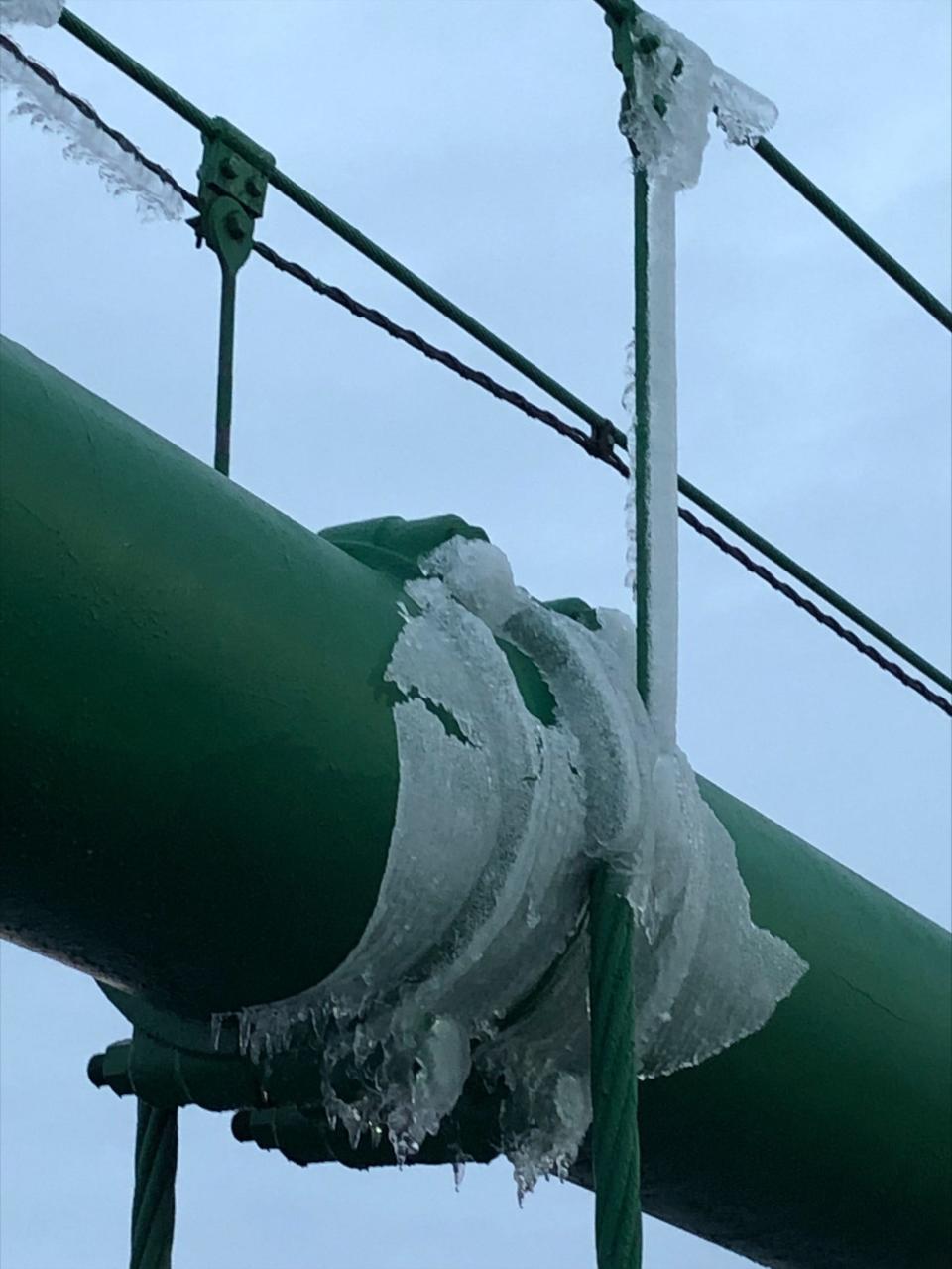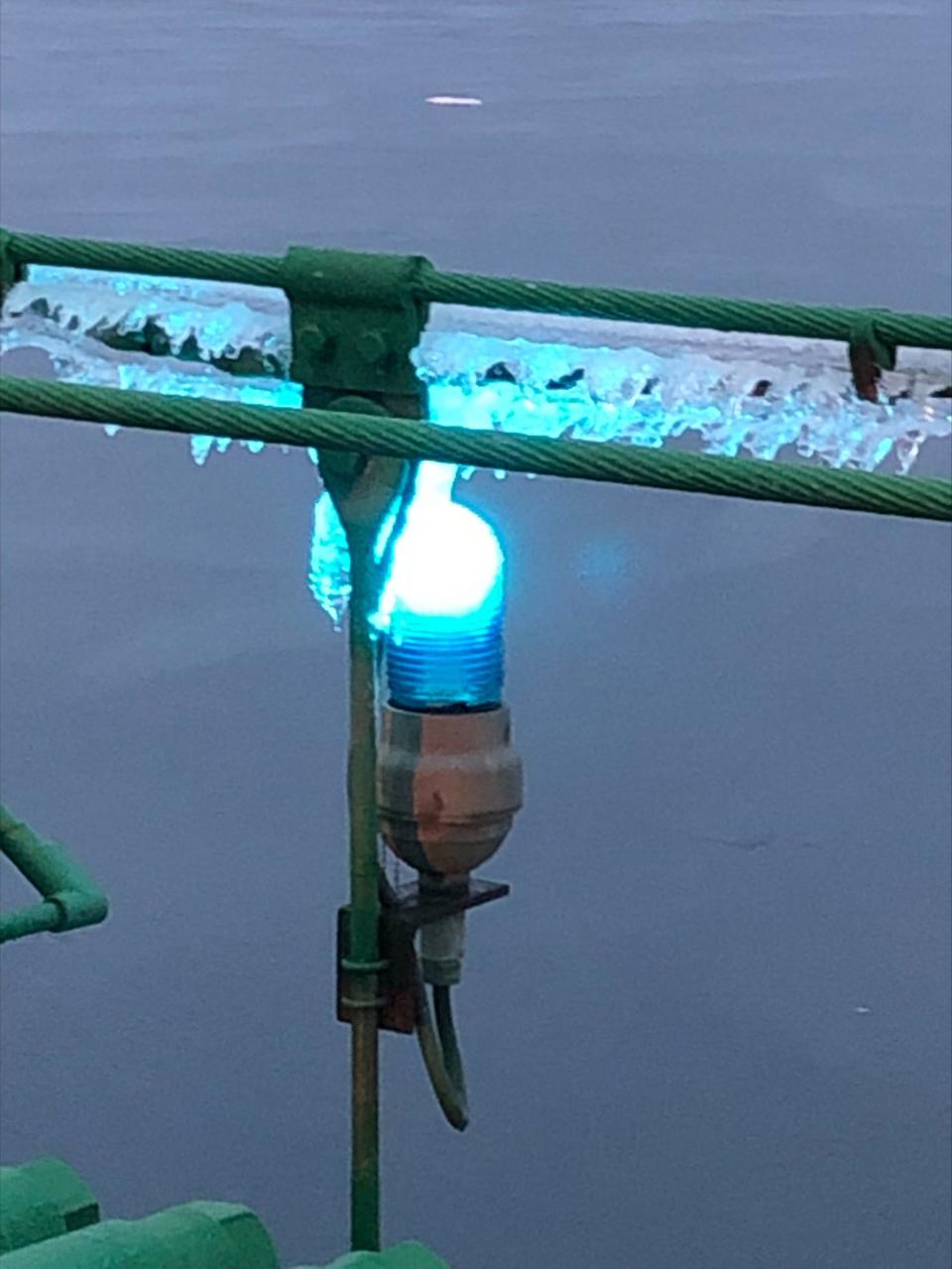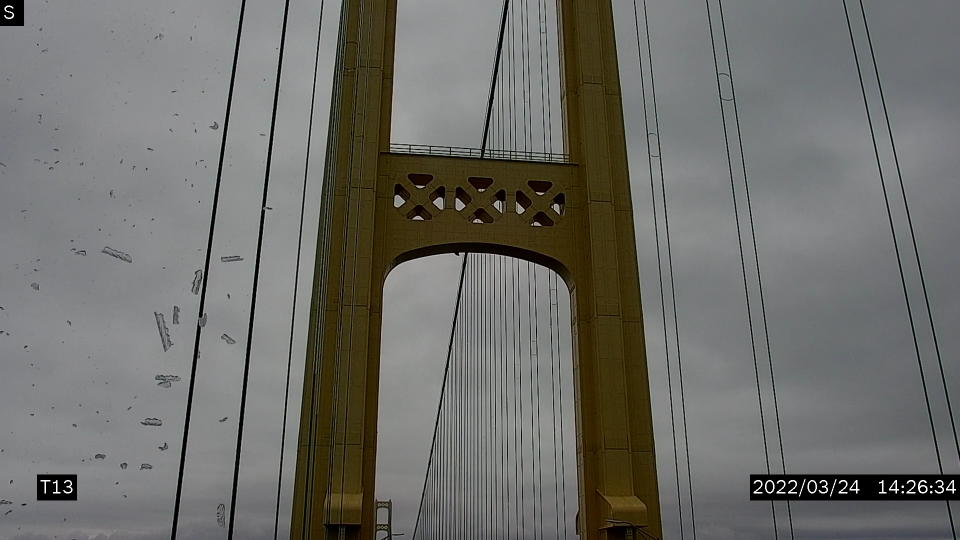When the Mackinac Bridge closes, local authorities and businesses take action

MACKINAW CITY — Twice last week the Mackinac Bridge was closed to traffic due to falling snow and ice.
Both closures lasted for hours, stranding motorists on either side of the five-mile span as officials waited for conditions to become safe enough for crossings to resume.
"The bridge was closed due to accumulated ice falling from the bridge down onto the roadway," said Kim Nowack, Mackinac Bridge Authority bridge director. "The falling ice can be very thick and large. The towers have large, flat surfaces and the cables have long sections that can accumulate ice. These can come down in large pieces and are very dangerous."
In early spring or when temperatures start to rise, authority officials keep their eyes on the weather forecast to determine when a thawing event might happen and ice may start falling from the winter accumulation.

Once it starts falling, the bridge is closed. Falling ice has damaged vehicles before — in 2019 a chunk of ice smashed through a car windshield as it crossed the bridge — and poses a significant safety risk. No damage or injuries were reported in last week’s closures.
"We station staff on the bridge with binoculars and we use our cameras to watch for falling ice and once this happens, we close," said Nowack. "The rise in temp and whether there is sun determine the closure duration. If the temps rise quickly, the ice will drop quickly."
While the bridge is closed, motorists must wait. Sometimes these are commuters who live and work on opposite sides of the Straits of Mackinac, while in one case last week school buses filled with students found themselves stuck.

Between 200-300 students were reported to be stranded on the south side of the bridge in Mackinaw City. Other buses made detours to stay in Gaylord while the bridge was closed.
Lt. Jeremy Runstrom, director of the Cheboygan County Office of Emergency Management, was able to help find safe, warm places for the children to wait out the closure. He worked with Mackinaw City Police Chief Todd Woods, Mackinaw County 911 Director and Assistant Emergency Manager Bryce Tracy and Emmet County Emergency Medical Director Randy Weston. They were able to find hotel rooms available at the Mackinaw Beach and Bay Inn for some of the students and they also set up a shelter at Mackinaw City Public Schools.
"The American Red Cross trailer, which is supplied with cots and blankets, was parked near the Mackinac Bridge," said Runstrom. "This agreement with the American Red Cross was prearranged in case it was needed in Northern Michigan. With the help from Chief Todd Woods, students and staff, each student had a cot set up and blankets within about an hour."
Runstrom said there were several other businesses in the Mackinaw City area who helped to make sure the students and teachers all had food while they waited.
When the bridge is closed, local law enforcement responds to the bridge and use their patrol vehicles to block traffic from entering the bridge. If someone tries to get around the blockades, they are stopped and given a citation.
There was one incidence reported last week of a driver trying to cross the Mackinac Bridge while it was closed. They were stopped, and the driver was issued a citation.

Nowack said the falling ice can be unpredictable, although the Mackinac Bridge Authority tries to minimize its impact and has explored different options for mitigating ice buildup on the bridge, such as driving their loaded plow trucks over the bridge to create vibrations that help loosen the ice.
So far, there has not been a practical and safe method found that would work.
Until a successful method is found, the bridge authority will continue to monitor the practicality of strategies like coating technologies being developed for airplanes and investigating how other suspension bridges around the world deal with similar problems.
"Suspension bridges in similar climates around the world face this problem of icing," said Nowack. "We hope that Mackinac Bridge customers understand that this is truly a safety issue, and falling ice has a real potential to injure or kill someone, even if they are inside a vehicle."

The Mackinac Bridge may close for many reasons throughout the year, including weather-related conditions like falling ice or high winds, for traffic crashes, or for the annual Labor Day Bridge Walk.
Closures due to falling ice don’t happen every year, but Nowack said it is becoming a more frequent problem.
"Closures are never convenient, but our first commitment is to the safety of customers and our staff," said Nowack.
Contact Features Writer Kortny Hahn at khahn1@gannett.com. Follow her on Twitter at @khahnCDT.
This article originally appeared on Cheboygan Daily Tribune: When the Mackinac Bridge closes, local authorities and businesses take action

